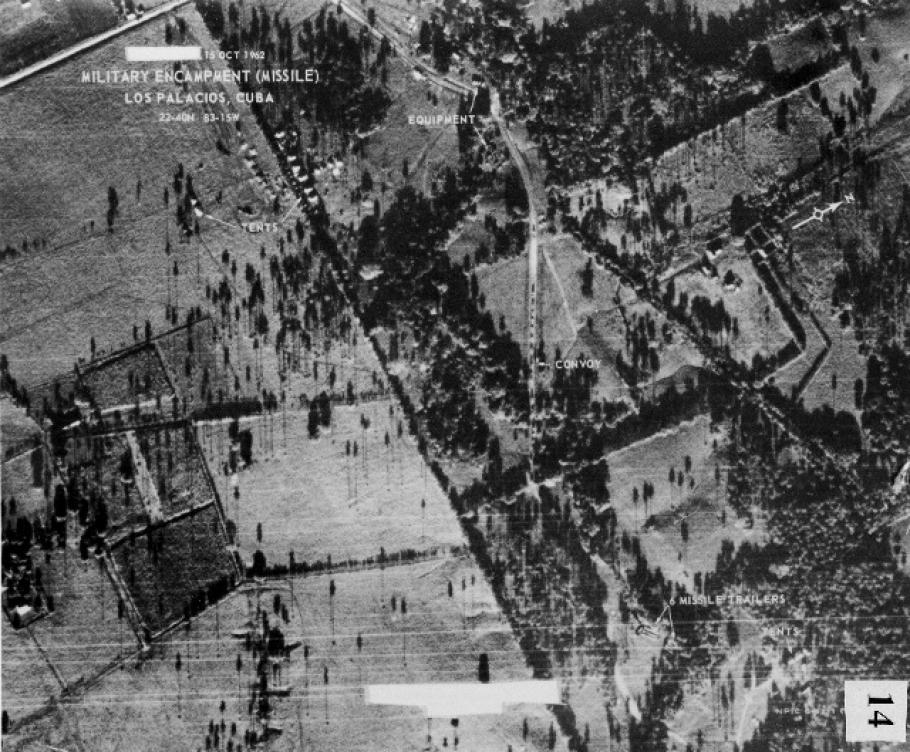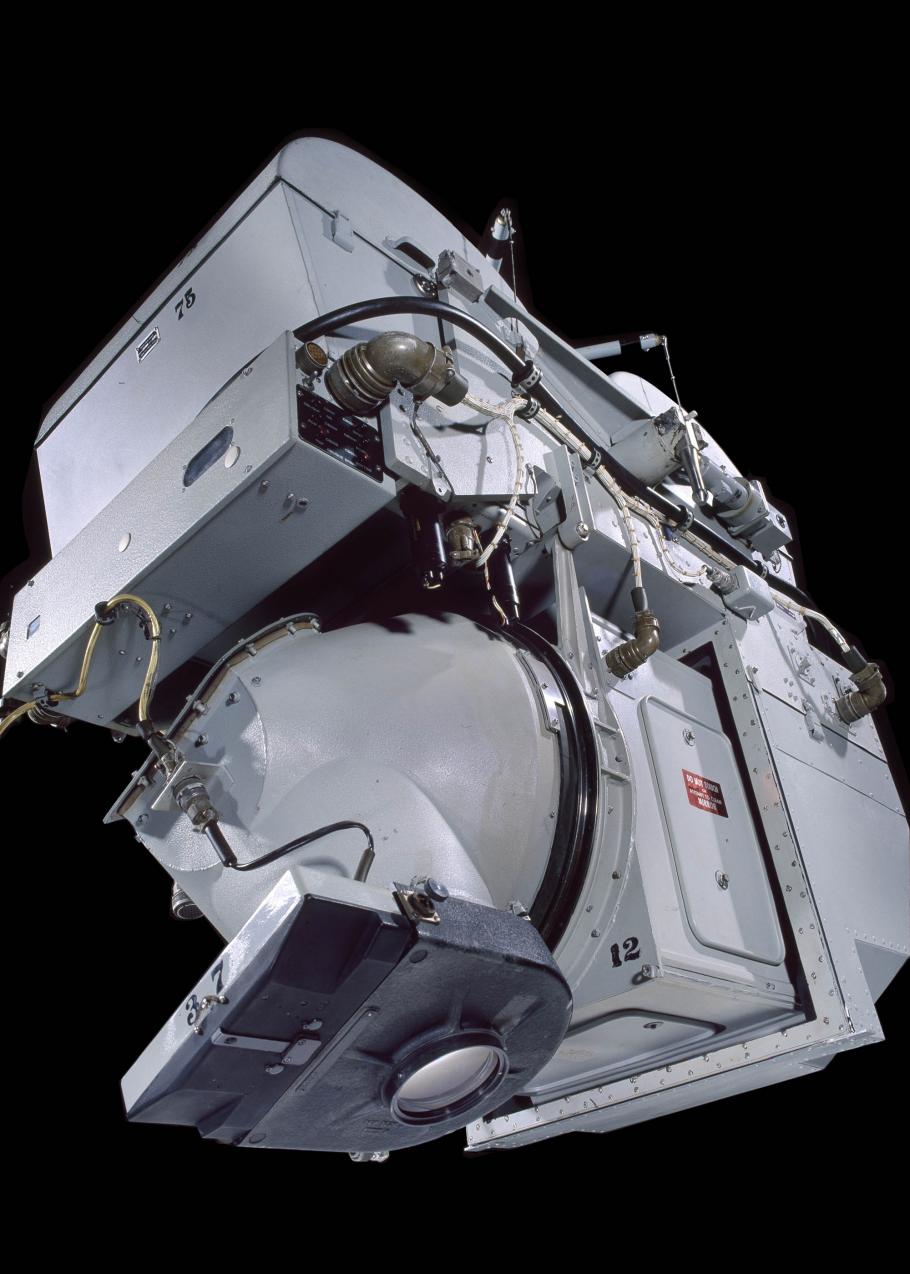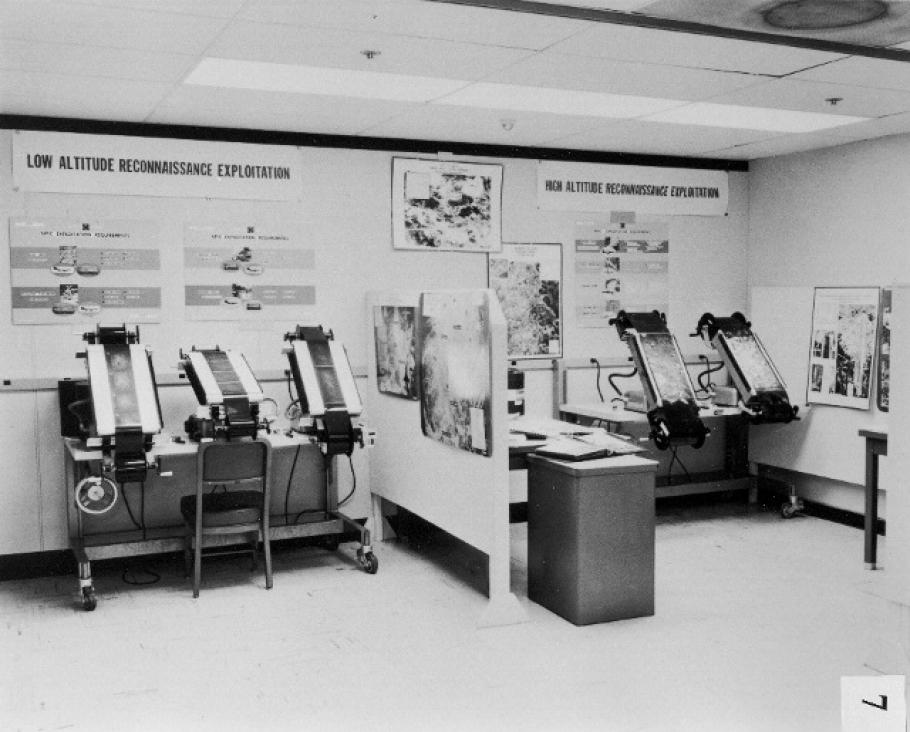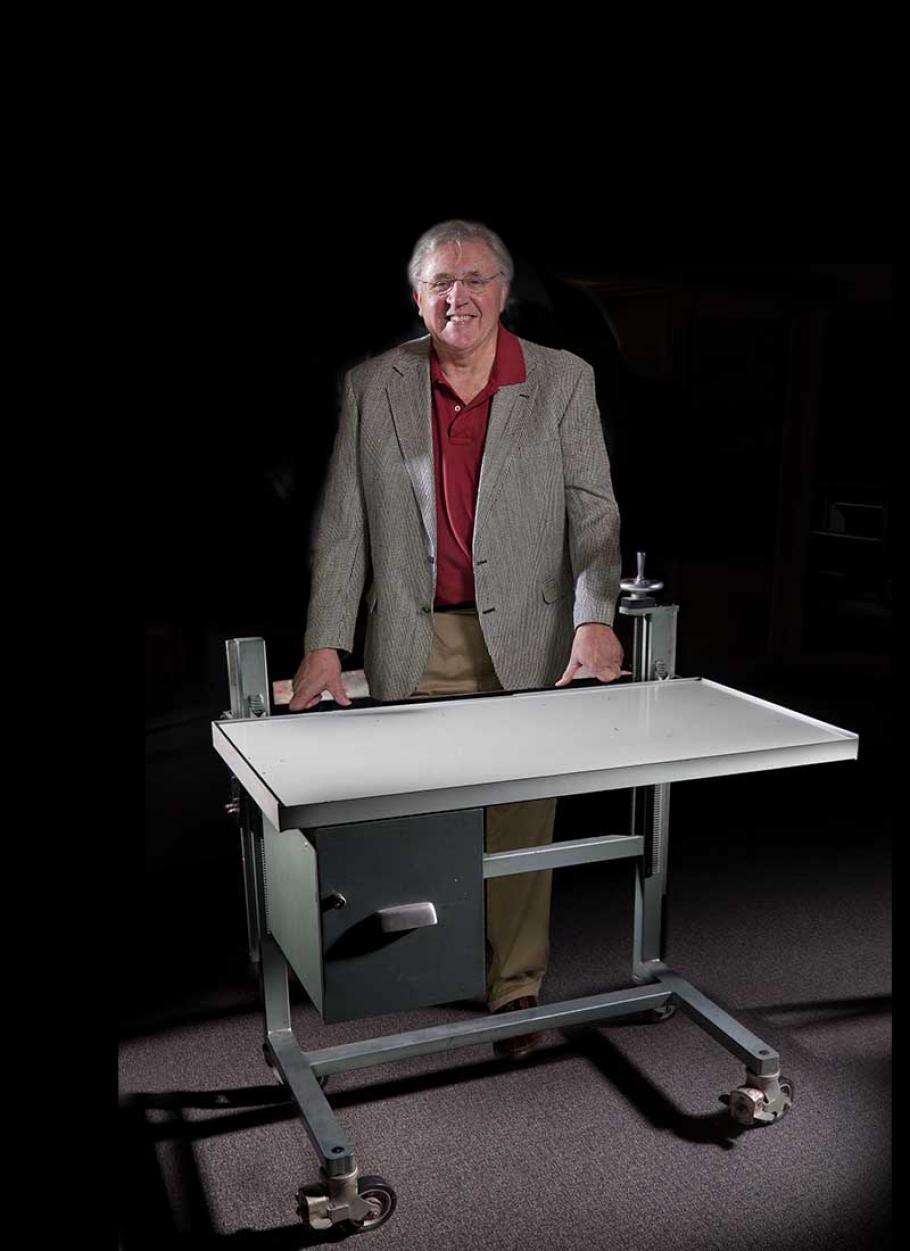On Monday morning, October 15, 1962, CIA photo interpreters (PIs) hovered anxiously over a light table at the National Photographic Interpretation Center (NPIC). The mood was urgent and foreboding. They peered down on 928 photographs of high quality—some of the best shots had a resolution of three feet. The images were just 24 hours old and top secret--taken by Major Richard S. Heyser on a clandestine flight over Cuba in a high flying U-2 aircraft. The extraordinary flight would inaugurate a whole series of high and low altitude reconnaissance sorties over Cuba.
One of only two Air Force pilots checked out to fly the CIA-modified U-2, Major Heyser had flown from Edwards Air Force Base in California to photograph a large corridor of territory west of Havana. His onboard camera possessed an effective range of 75 miles. On this spy mission, he encountered no fighter interceptors or anti-aircraft defenses.
The Hycon Model B panoramic camera was used in the Lockheed U-2 reconnaissance aircraft.
Once Heyser landed his U-2 at McCoy Air Force Base near Orlando, Florida, the exposed film was loaded on a courier aircraft for immediate delivery to the CIA in Washington. From late Sunday afternoon into the night, technicians worked feverishly to transfer the negatives onto clear acetate positives. No effort had been spared to ensure that the high value images reach the green light table at the NPIC for analysis on that fateful Monday morning. During a work session that extended into the late afternoon the PIs eagerly and painstakingly scrutinized this remarkable cache of photos. They discovered clear evidence of Nikita Khrushchev’s bold move to install a network of missile launch sites in Cuba.
All who viewed the photos at the NPIC realized that a confrontation between the United States and the Soviet Union was now imminent, and it would bring the two Cold War rivals to the brink of a nuclear war. One of the identified launch sites—dubbed San Cristobal No. 2—revealed telltale signs of construction with six missile trailers, stacked equipment, and tents for the work crews. Arthur Lundahl, the Director of NPIC, viewed this image at the light table. He agreed that this installation was being prepared for SS-4 medium range missiles. “If there was ever a time I want to be right in my life, this is it,” Lundahl later observed. He then contacted CIA Headquarters with this momentous intelligence coup.
By 8:00 pm, McGeorge Bundy, the National Security Advisor, had been alerted. When faced with this grim report, Bundy decided to delay his briefing for the President until the following morning. While still in his pajamas, President Kennedy viewed the photographs in a Tuesday morning briefing. He was told: “Mr. President, there is now hard photographic evidence that the Russians have offensive missiles in Cuba.” The implications of the Soviet installations in Cuba were ominous. Some of the missile launch sites, it was feared, could be armed with nuclear weapons in two weeks.Experts warned that 80 million Americans could die within ten minutes of the firing of missiles from these launch sites, a mere 90 miles off shore. The rest of the story is well-known. President Kennedy moved quickly to organize a special executive committee to advise him on the proper American response. Both military and diplomatic measures were followed to resolve the crisis. For Kennedy, the removal of the missiles was imperative and non-negotiable. He ordered a quarantine of Cuba on October 21. Plans were in motion to strike the missile bases, even invade Cuba. President Kennedy’s televised address on October 22 at 7:00 pm alerted the nation to the unfolding crisis.
The stakes were indeed high: “It shall be the policy of this nation to regard any nuclear missile launched from Cuba against any nation in the Western Hemisphere as an attack by the Soviet Union on the United States, requiring a full retaliatory response upon the Soviet Union.” The enforcement of quarantine (read blockade) meant the possible interception of Soviet ships en route to Cuba. How would the Soviets respond? The fate of the world seemed tied to a hair trigger, one that could be set off by either side. The crisis ended on October 28 when both superpowers agreed to step back from the abyss. The Soviet Union agreed to withdraw the missiles in exchange for a declaration from the United States that it would not invade Cuba and withdraw missiles from Great Britain and Turkey. The light table had been at the epicenter of this unparalleled national crisis—what became known as the Cuban Missile Crisis.
The Light Table at the CIA
In the decade that followed, the CIA took measures to preserve its “Cuban Missile Crisis artifacts.” In 1972, on the occasion of the tenth anniversary of the crisis, the CIA showcased these artifacts in a special 31-panel exhibit. Sadly, the exhibit was “closeted” and not accessible to the general public. In January 1976, Michael Collins, Apollo 11 astronaut and then Director of the National Air and Space Museum, was authorized to see the CIA’s 1972 exhibition, then in storage.
This visit had been arranged by Dino Brugioni of the NPIC, a man who would do much to enlarge the public understanding of the Cuban Missile Crisis in the decade that followed. Collins was impressed with the many photographs and artifacts associated with the exhibit. In a follow up letter to William E. Colby, Director of the Central Intelligence Agency, Collins expressed his interest in the transfer of the Cuban Missile Crisis artifacts to the National Air and Space Museum—particularly, “duplicate negatives of photographs used…the historic U-2 camera, pilot suits, ejection seat, survivor gear, photo interpretation equipment, etc.” A month later, Carl E. Duckett, Deputy Director for Science and Technology at the CIA, notified Michael Collins that a selection of artifacts from their 1972 exhibit would be transferred to the Smithsonian Institution.
The Light Table Comes to the Museum
n February 1977, the light table, along with 14 other artifacts, arrived at the Museum’s storage facility in Suitland, Maryland. Don Lopez, then Assistant Director for Aeronautics, had expressed in his correspondence with the CIA an interest in displaying some of the missile crisis artifacts in a future exhibit. For this reason, possibly, the light table was transferred to the Museum on the National Mall in Washington, DC. When the light table did not fit into the exhibit program, Lopez decided to keep it in the Aeronautics Department. Eventually he recruited me to accession the light table and the other CIA artifacts, a curatorial task I completed on August 3, 1984.
At this juncture, Lopez encouraged me to retain the light table within the confines of the Aeronautics Division. From the mid-1980s to 2011, it became a welcome fixture in my curatorial life at the Museum. For a host of volunteers (too many to name here, sadly), the light table was present with us, witnessing our activities as we sorted documents and photographs related to a series of books: Gatchina Days; Igor Sikorsky: The Russian Years; Stalin’s Aviation Gulag; Great Aviators and Epic Flights; and most recently, Red Phoenix Rising, The Soviet Air Force in World War II. One major initiative was the organization of the “Russian Aero Collection,” a huge assemblage of reference materials in both Russian and English. Other archival tasks conducted in the presence of the light table included processing of the Rodina Collection, the Black Wings Exhibit collections, and the copying of the audio cassette tapes of lectures by major aerospace figures in the old Langley Theater. We all maintained a deep respect, even awe, for the historical significance of the light table in American history. It brought a unique ambiance to our work environment.
In the late 1980s, I was routinely visited by air attaches from the Soviet Embassy. Knowing of my specialization in Russian aviation history, they perceived that I might be an important contact to make in Washington (a wild exaggeration, of course!). They came to the Museum for conversation, research in our library, and occasionally for lunch. I should note that two of three air attaches I hosted at the Museum were expelled from the United States as spies. When they visited my office, they sat in a chair next to a historic artifact associated with the Cuban Missile Crisis, a fact I delighted in bringing to their attention!
On August 3, 2011, on the eve of my retirement, I arranged to transfer the light table to storage at the Garber Facility. This was indeed a sad day. I was reluctant to bid farewell to this venerable companion. I determined, however, that in the last week of the partnership, the light table would bear witness to one more link to Russia. I sorted a group of Russian language books on early aviation—a personal gift--for their transfer to the Ramsey Room of the National Air and Space Museum Library. Up to its final hours in our Division, there was continuity with Russian historical themes.
Some Reflections on Artifacts
Three dimensional artifacts possess intrinsic power and meaning. They offer an avenue to connect with the past—in a way quite different from books or films. They are tied to our texture of memory in a unique way. For example, standing next to the Spirit of St. Louis is awe-inspiring when you think of Charles Lindbergh’s solo flight across the vast expanse of the Atlantic in this small and fragile airplane. It is not just another airplane. The human feat associated with the material object is alluring and magnifies our sense of history. The light table links us in a tangible way to the Cuban Missile Crisis. For several hours on October 15, 1962, this nondescript table became a hinge point in history. Of course, there are other “tables” associated with an epic moment in history. One example quickly comes to the mind—the marble top table used by Robert E. Lee to sign the surrender documents at Appomattox, Virginia in April 1865. Here one mundane piece of furniture in the home of Wilmer McLean became a platform for a momentous event to unfold. That historic artifact, I understand, now resides in the Chicago Historical Society.
Taking leave of the light table evoked in me and my volunteers a certain longing. We wondered if and when we would meet our old friend again, or if the venerable artifact would need to remain in storage for years to come (we joked about that familiar warehouse scene at the end of the movie Raiders of the Lost Ark!). Our fond wish is for the light table to reemerge some day in an exhibit at the Museum. A second light table used by CIA photo interpreters during the Cuban Missile is on loan to the Smithsonian National Museum of American History, directly across the National Mall from our Museum in Washington, DC, and can currently be seen on display in their Price of Freedom exhibition.
Von Hardesty recently retired as curator in the Museum’s Aeronautics Division This Friday, Oct 19, don't miss "Eyeball to Eyeball: The Inside (Photographic) Story of the Cuban Missile Crisis," a lecture with Dino Brugioni, former CIA analyst who was at NPIC when the first U-2 photos were analyzed.



